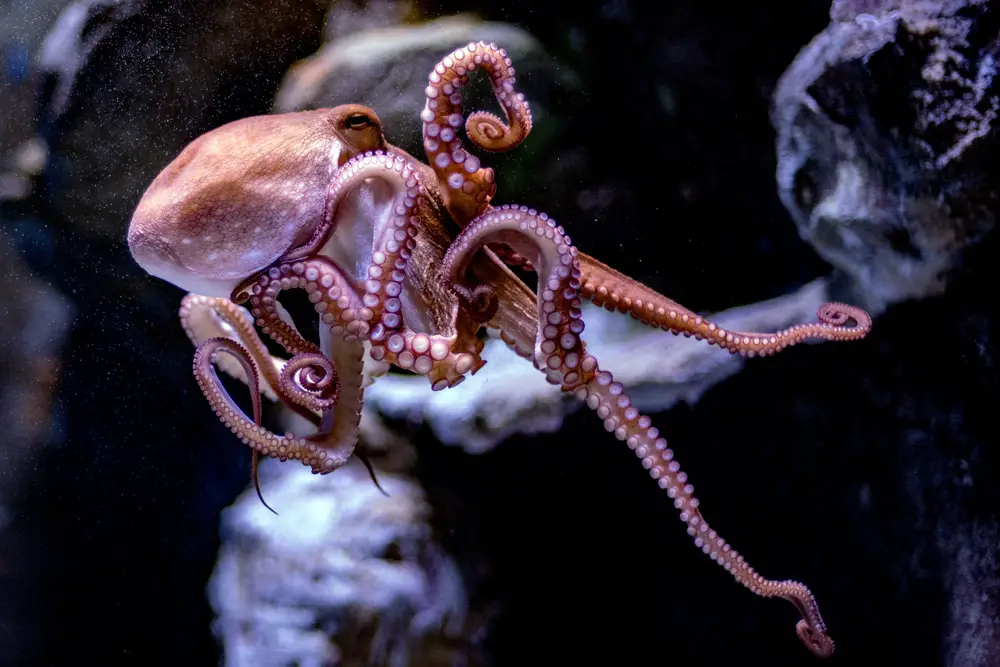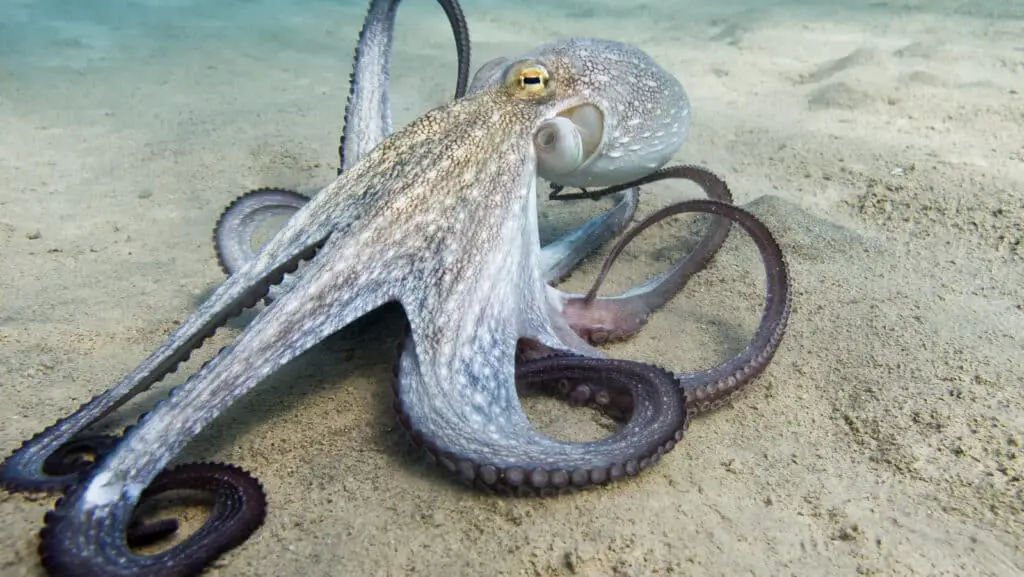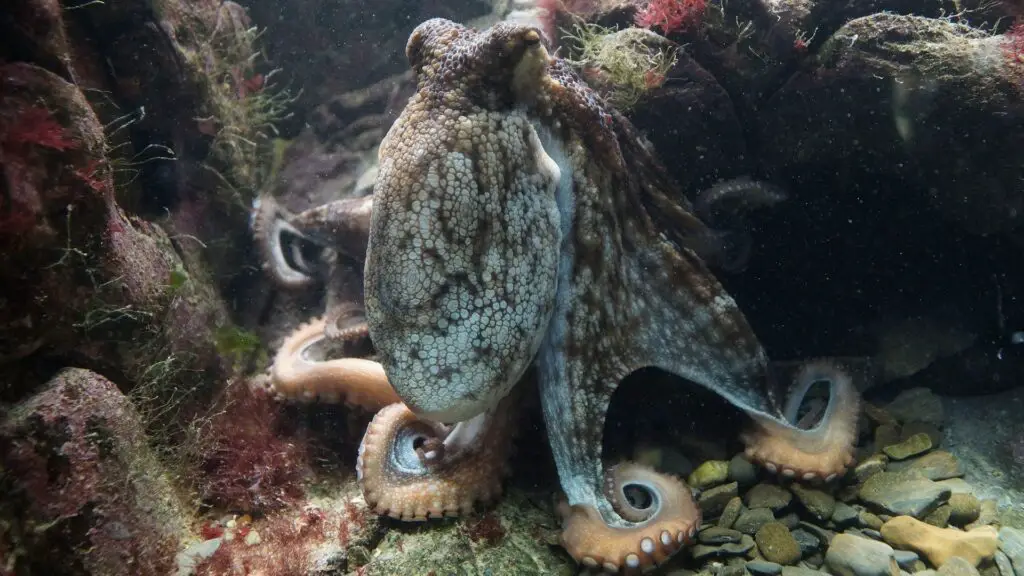Do Octopus Legs Grow Back

Introduction
Do Octopus Legs Grow Back: Octopuses, those enigmatic and intelligent creatures of the deep, have long captured the imagination of scientists and curious minds alike. Among their many intriguing features, one that has garnered significant attention is their ability to regenerate lost limbs. The question of whether octopus legs can indeed grow back is a fascinating topic that offers insights into the remarkable capabilities of these marine wonders.
Unlike humans, who possess limited regenerative abilities, octopuses exhibit a remarkable capacity for tissue regeneration. When confronted with a predator or unfortunate accident that results in the loss of a limb, octopuses can initiate a remarkable process of regeneration. This process is not only a matter of survival but also a testament to the incredible adaptability of these cephalopods.
We delve into the world of octopus biology, examining the mechanisms and mysteries behind their regenerative powers. We’ll explore the scientific studies and observations that shed light on how octopus legs regenerate and what factors influence this process. We’ll consider the potential applications of this knowledge in fields such as regenerative medicine and tissue engineering.

How long does it take for an octopus limb to grow back?
From being able to regenerate an entirely new arm in just 2-4 months to having mini-brains in each arm to being able to smell, taste, and sense light, octopus arms are just one more topic we can all geek out about!
The regeneration of an octopus limb is a fascinating process that, surprisingly, doesn’t occur overnight. The duration it takes for an octopus limb to grow back can vary depending on several factors, including the age and size of the octopus, as well as the specific species. In general, though, this remarkable feat of regeneration typically spans several weeks to a few months.
During this time, the octopus’s body undergoes a complex series of cellular events. It begins with the formation of a structure known as a “regeneration bud” at the site where the limb was lost. This bud consists of undifferentiated cells that will eventually develop into the various tissues needed for the new limb. As the octopus grows, these cells divide and differentiate into the specialized tissues necessary for the limb, such as muscles, skin, and suckers.
While the exact duration may vary, the regrowth of an octopus limb exemplifies the intricate biological processes that enable these remarkable creatures to adapt and thrive in their underwater environments. Studying this phenomenon not only deepens our understanding of octopus biology but also holds promise for advancements in regenerative medicine and tissue engineering for humans.
Can an octopus regrow its tentacles back?
Besides their nervous system, octopuses can also regenerate their tentacles (3) and parts of the eye (4). This exceptional regenerative ability is not unique to octopuses – other members of Cephalopod species, like cuttlefish, can also regenerate arms (1).
Yes, octopuses possess the remarkable ability to regrow their tentacles if they happen to lose one. This regenerative capacity is one of the most fascinating aspects of octopus biology. When an octopus loses a tentacle due to predation, injury, or other causes, it doesn’t mean the loss is permanent.
The regrowth process starts with the formation of a specialized structure called a “regeneration bud” at the site where the tentacle was severed. This bud consists of undifferentiated cells, which have the incredible ability to transform into the various tissues needed to construct a new tentacle. Over a period of weeks to months, these cells divide and differentiate into the specific components required, including muscles, skin, and suction cups.
The precise timeline for regrowth can vary among individual octopuses and species. Factors such as age, health, and environmental conditions can influence the rate of regeneration. Nonetheless, this regenerative capability showcases the octopus’s adaptability and resilience, allowing it to recover from injuries and carry on with its highly dynamic and intelligent life in the ocean depths. Studying the regrowth of octopus tentacles not only deepens our appreciation for their remarkable biology but also holds potential insights for regenerative medicine research in humans.
Do all octopus regrow limbs?
Cephalopod molluscs, and in particular Octopus vulgaris, are well known for their capacity to regenerate their arms and other body parts, including central and peripheral nervous system.
While many octopus species are known for their impressive limb regeneration abilities, it’s important to note that not all octopuses can regrow limbs to the same extent or under the same circumstances. The capacity for limb regeneration can vary among different species and is influenced by several factors.
Most octopus species have some degree of regenerative ability, meaning they can regrow lost limbs to varying extents. However, the rate and success of regeneration can differ. Some octopuses can fully regenerate a lost limb, while others may only partially regrow it, resulting in a less functional appendage.
Additionally, the age and health of the octopus play a role in its regenerative capabilities. Younger, healthier octopuses often exhibit more robust regrowth compared to older or stressed individuals. Environmental factors and the specific circumstances of limb loss, such as the cause and location of the injury, can also influence the regenerative process.
While limb regeneration is a remarkable feature common among octopuses, it’s not a uniform trait across all species or individuals. The extent of regrowth varies, and factors like species, age, health, and environmental conditions all play a part in determining the octopus’s ability to regenerate its limbs.
Why can octopus regrow limbs?
Once it sheds an arm, the octopus’s body gets to work building a new one. Cells called hemocytes flood the place where the arm was lost, and then regenerating fibers start growing into what will become a brand-new, fully functioning arm!
Octopuses possess the astonishing ability to regrow limbs thanks to a combination of unique biological adaptations. This regenerative prowess is a testament to their incredible adaptability and resilience in the face of injury or predation.
At the heart of octopus limb regeneration is their remarkable cellular and genetic makeup. Unlike many vertebrate animals, octopuses have a high degree of cellular plasticity. When a tentacle is severed or damaged, specialized cells at the site of injury undergo a process called dedifferentiation. This means they revert to a more primitive, stem cell-like state, enabling them to transform into various cell types needed for the regeneration of the missing limb.
In addition to cellular flexibility, octopuses have evolved a sophisticated system of signaling pathways and growth factors that orchestrate the complex process of limb regeneration. These molecular signals guide the differentiation of dedifferentiated cells into the appropriate tissues, such as muscles, skin, and suckers, to rebuild the lost limb.
This remarkable combination of cellular plasticity and intricate molecular mechanisms enables octopuses to regrow their limbs with remarkable precision. While the exact details of these processes continue to be a subject of scientific investigation, the ability of octopuses to regenerate their limbs stands as a remarkable example of nature’s capacity for adaptation and recovery.
Do octopus legs have bones?
Octopuses are invertebrates, which means they do not have bones. Unlike vertebrates, which have a rigid internal skeleton, octopuses have a hydrostatic skeleton made up of muscles and fluid.
In fact, octopuses belong to a group of animals called cephalopods, which includes octopuses, squids, and cuttlefish, and these creatures are renowned for their lack of a rigid internal skeleton, such as bones or cartilage.
Instead of bones, octopus legs are composed primarily of soft tissue. The core of each tentacle contains a flexible, muscular structure that provides the necessary strength and flexibility for movement and manipulation. Surrounding this core are layers of connective tissue and muscle fibers that allow the octopus to control the precise movements of its tentacles.
This absence of bones is a key adaptation for cephalopods, as it grants them exceptional flexibility and agility, making them highly effective hunters and escape artists. Octopuses can twist and bend their tentacles in a multitude of ways, enabling them to capture prey, manipulate objects, and navigate through complex environments with ease.
The absence of bones also means that octopuses are incredibly soft-bodied creatures, which allows them to squeeze through tight spaces and hide in crevices, further enhancing their survival strategies in the ocean. In essence, the absence of bones in octopus legs is a remarkable adaptation that underscores the ingenuity of nature in creating diverse and highly specialized forms of life.
How long does it take for an octopus leg to grow back?
The regrowth of an octopus leg is a complex and fascinating process that doesn’t happen overnight. The duration it takes for an octopus leg to fully regenerate can vary depending on several factors, including the species, age, and health of the octopus, as well as the specific circumstances of the injury.
In general, the regrowth of an octopus leg can take several weeks to a few months. It begins with the formation of a specialized structure known as a “regeneration bud” at the site where the leg was lost. This bud consists of undifferentiated cells that have the remarkable ability to transform into the various tissues required for a new leg.
Over time, these undifferentiated cells undergo a series of cellular processes, including cell division and differentiation, to create the various components of the missing leg, such as muscles, skin, and suckers. The exact timeline for regrowth can vary among individual octopuses and is influenced by factors like the octopus’s overall health and environmental conditions.
This regenerative capacity highlights the remarkable adaptability and resilience of octopuses, allowing them to recover from injuries and continue their active and dynamic lives in the ocean. Studying this process not only deepens our understanding of octopus biology but also holds potential insights for regenerative medicine research in humans.
Can an octopus regenerate multiple legs simultaneously?
Octopuses cannot regenerate multiple legs simultaneously. While these remarkable creatures have the unique ability to regrow lost or damaged limbs, their regeneration process typically occurs one limb at a time. When an octopus loses a tentacle, it initiates the complex and intricate process of regeneration specifically for that missing limb.
The regeneration process begins with the formation of a “regeneration bud” at the site where the tentacle was severed. This bud consists of undifferentiated cells that will eventually develop into the various tissues needed to construct a new tentacle. These cells divide and differentiate over a period of weeks to months to recreate the lost appendage.
The capacity for limb regeneration requires significant biological resources and energy, and attempting to regenerate multiple limbs simultaneously would likely be an overly taxing and energetically demanding process for an octopus. Therefore, octopuses focus their regenerative efforts on one limb at a time to ensure a more efficient and successful recovery.
While octopuses can indeed regenerate their lost limbs, it’s a gradual and meticulous process that prioritizes the replacement of a single missing tentacle before considering the regeneration of another. This adaptation underscores the octopus’s ability to allocate resources wisely and maximize its chances of survival in its dynamic underwater environment.
Why do octopuses regenerate their legs?
Octopuses are fascinating creatures, known for their remarkable ability to regenerate their legs. This remarkable capability serves a vital purpose in their survival and adaptation to the unpredictable challenges of their underwater habitats. Octopuses are incredibly agile and intelligent marine animals, but their lives can be fraught with danger, including encounters with predators or accidents that may lead to the loss of a limb.
Regeneration allows octopuses to recover from such setbacks swiftly. Their regenerative powers stem from specialized cells called pluripotent stem cells, which can transform into various cell types, including those needed for the growth of new limbs. When an octopus loses a leg, these stem cells spring into action, initiating a process that can take several weeks to complete. During this time, a new limb gradually develops, eventually matching the size and function of the lost one.
This remarkable ability not only ensures their survival but also offers insights into regenerative biology that could potentially benefit human medicine. Studying octopus regeneration may unlock clues for improving our understanding of tissue regeneration and the development of regenerative therapies for injuries and diseases in humans. In the depths of the ocean, octopuses are nature’s masters of resilience and adaptation, showcasing the astonishing potential of life in the sea.

Conclusion
The world of octopus limb regeneration is a captivating arena where nature’s incredible capabilities continue to astound us. Through the examination of scientific research and observations, we have gained valuable insights into the mechanisms that underlie the regrowth of octopus legs.
Octopuses possess a unique regenerative ability that sets them apart from many other animals. Their capacity to regrow limbs represents a remarkable example of adaptation and survival in the face of adversity. While the exact mechanisms behind this process are still being unraveled, it is clear that a combination of cellular proliferation, dedifferentiation, and intricate signaling pathways plays a role in enabling this regrowth.
The knowledge gained from studying octopus limb regeneration has the potential to influence various fields of science and medicine. Insights into tissue regeneration in octopuses may inspire advancements in regenerative medicine and tissue engineering for humans, offering hope for the development of innovative treatments and therapies.



